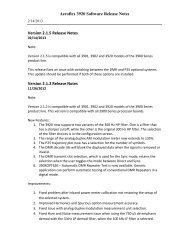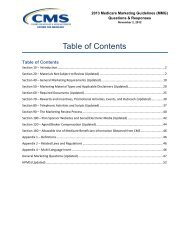White Paper Reforming the Asset-Backed Securities Market - The AMI
White Paper Reforming the Asset-Backed Securities Market - The AMI
White Paper Reforming the Asset-Backed Securities Market - The AMI
Create successful ePaper yourself
Turn your PDF publications into a flip-book with our unique Google optimized e-Paper software.
4. Develop, for each asset class, standard pooling and servicing agreements with model<br />
representations and warranties as a non-waivable industry minimum legal standard. Right<br />
now every pooling and servicing agreement for a securitization is custom-written.<br />
Representations and warranties vary tremendously from deal to deal, even within <strong>the</strong> same<br />
fundamental asset class (mortgages, credit cards, etc.). This requires investors to spend<br />
tremendous amounts of time analyzing <strong>the</strong> differences between different transactions’ legal<br />
terms and subjectively weighing <strong>the</strong> economic meaning of those terms before coming to<br />
investment decisions – or alternatively to ignore <strong>the</strong>se differences of legal terms in <strong>the</strong> interest of<br />
time, to <strong>the</strong> peril of investors when problems develop in <strong>the</strong> market.<br />
This lack of standardization and <strong>the</strong> length of <strong>the</strong> legal documentation effectively created<br />
opacity in <strong>the</strong> securitization market, which substantially contributed to <strong>the</strong> recent problems<br />
experienced by market participants. When collateral pool performance deteriorated, panic set in<br />
and investors began to question <strong>the</strong> value of <strong>the</strong>ir securities, <strong>the</strong>y knew that <strong>the</strong>y did not have <strong>the</strong><br />
time to read all of <strong>the</strong> different several-hundred-page deal agreements to evaluate <strong>the</strong>ir holdings.<br />
This reinforced <strong>the</strong> rush to liquidate positions. What investor wants to be <strong>the</strong> last one holding a<br />
security <strong>the</strong> terms of which he doesn’t fully understand? Potential buyers of <strong>the</strong>se securities in<br />
turn would not step into <strong>the</strong> market without having read <strong>the</strong> documents <strong>the</strong>mselves, causing <strong>the</strong><br />
entire fixed-income market worldwide to freeze up.<br />
Standardizing legal documentation gives investors a common framework with which to<br />
evaluate <strong>the</strong>ir potential and actual holdings of asset-backed and structured finance securities<br />
based largely if not solely on collateral pool performance. <strong>The</strong> asset-backed securities market as<br />
a whole would <strong>the</strong>reby become more homogenous and <strong>the</strong>refore more liquid. Investors should<br />
be able to rely on certain baseline assurances as to <strong>the</strong> nature of <strong>the</strong> collateral underlying <strong>the</strong>ir<br />
securities. Having a single standard set of representations and warranties that must be met or<br />
exceeded in every transaction gives investors comfort about <strong>the</strong> assets in which <strong>the</strong>y have an<br />
interest, and reduces <strong>the</strong> overhead costs of investing in <strong>the</strong>se securities. In addition, standardized<br />
representations and warranties would streamline resolution of disputes as to whe<strong>the</strong>r<br />
representations and warranties are met by individual assets within collateral pools.<br />
Model agreements for <strong>the</strong> asset-backed securities market should be drafted with <strong>the</strong> best<br />
interests of <strong>the</strong> investing public, and with clarity of rights and responsibilities, at <strong>the</strong>ir cores.<br />
5. Develop clear standard definitions for securitization markets. Without a common<br />
language and agreement on <strong>the</strong> meanings of fundamental concepts – such as “delinquency” and<br />
“default” – <strong>the</strong> value of data is diminished, <strong>the</strong> ability to compare securities across different<br />
pools is diminished, and <strong>the</strong> concepts of relative collateral pool performance and economic value<br />
become seriously muddied. <strong>The</strong>re are no such standard definitions currently, and as a result<br />
servicers with very similar underlying collateral pools and servicing standards can produce<br />
radically different reports of collateral performance. For example, <strong>the</strong> term “delinquency” can<br />
be determined ei<strong>the</strong>r on a contractual or recency-of-payment basis. Even among firms that<br />
would define delinquency on <strong>the</strong> same basis, each servicing agreement can have different<br />
interpretations on reporting of delinquencies – some may report advances that a servicer makes<br />
to a pool that could be applied to reduce stated delinquencies, but o<strong>the</strong>r servicing agreements<br />
may not. When no one agrees on what delinquencies are and how <strong>the</strong>y must be reported, <strong>the</strong>n<br />
how do we know what <strong>the</strong> term “default” means? How can anyone really understand what is<br />
happening if <strong>the</strong>re is so much variability deal-to-deal and <strong>the</strong>re are no industry-standard









